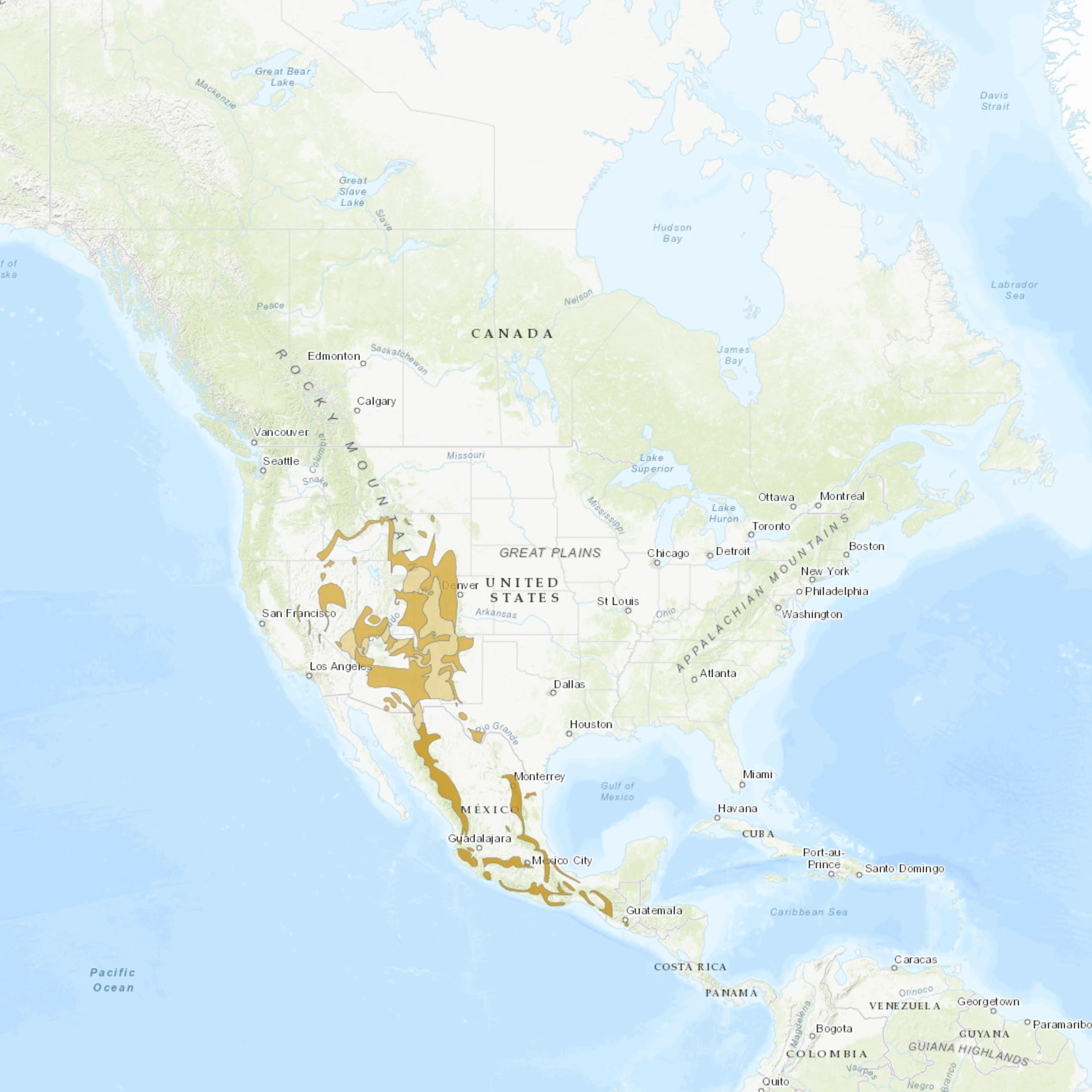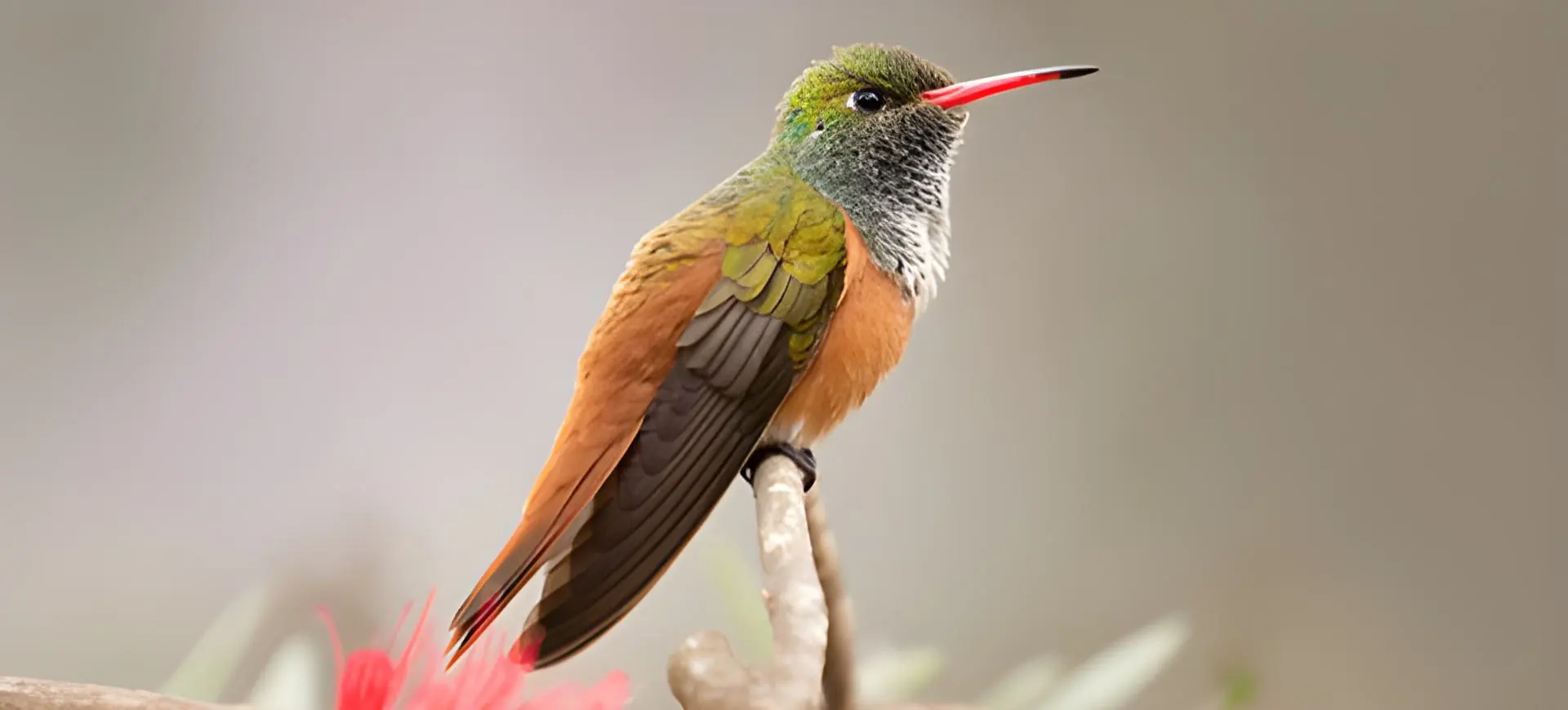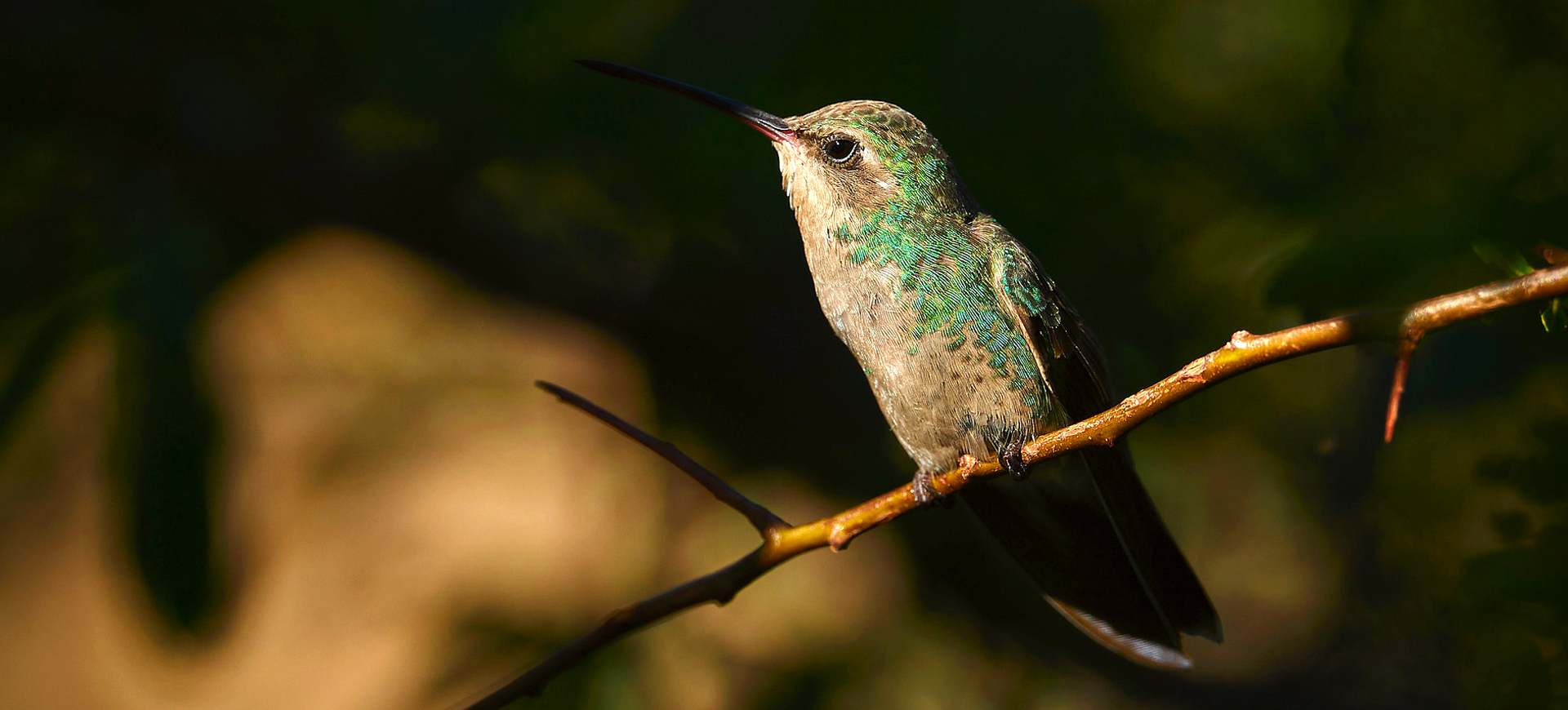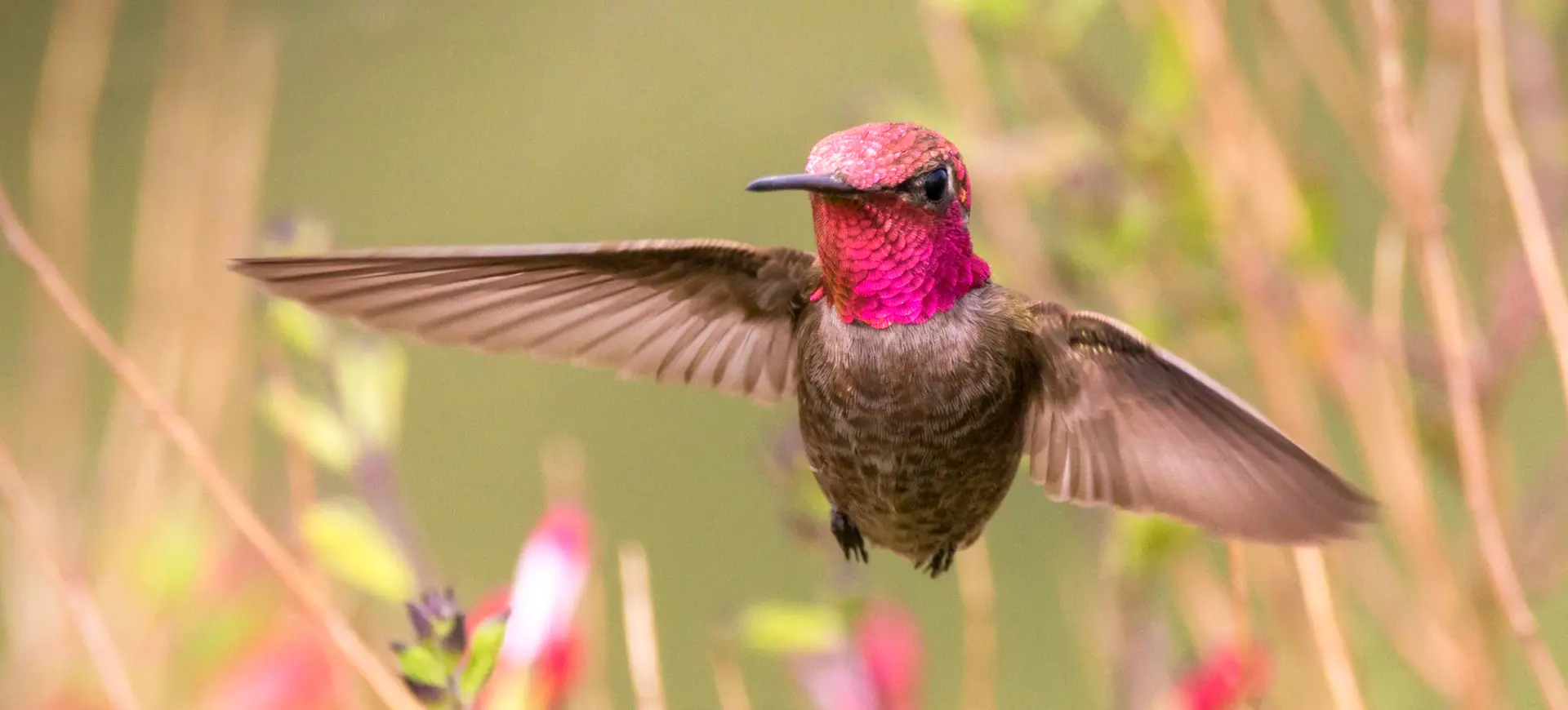Overview
The Broad-tailed Hummingbird is a medium-sized hummingbird recognized for its vibrant iridescent colors and distinctive wing sounds produced during flight. This species inhabits high-elevation meadows and open woodlands, favoring areas abundant with flowering plants. Males are known for their striking rose-magenta gorget, which reflects brilliant hues under direct sunlight. Females and juveniles exhibit more subdued coloration, primarily greenish upperparts with pale underparts speckled with green.
These birds are migratory, breeding mainly in the western United States and wintering in Mexico and Central America. They display remarkable site fidelity, often returning to the same breeding and wintering locations annually. Their high-energy lifestyle requires constant foraging for nectar, supplemented with small insects and spiders. The species is a crucial pollinator within its habitat, significantly contributing to the reproductive success of numerous native plants.
Broad-tailed Hummingbirds are well-adapted to cooler montane climates, exhibiting physiological mechanisms that conserve energy during cold nights. They can enter torpor, a state of significantly reduced metabolic rate, to survive low nighttime temperatures. Their territorial behavior, particularly in males, is evident during breeding, with pronounced aerial displays and vocalizations. The characteristic wing trill produced by males in flight is a reliable field identification feature unique to this species.
Taxonomy
Kingdom
Phylum
Class
Order
Family
Genus
Species
Type
Current distribution:
Broad-tailed Hummingbirds breed extensively throughout the western United States, including Colorado, Utah, Arizona, New Mexico, and parts of California. They migrate southward in late summer and early fall, traveling through Texas and northern Mexico to wintering grounds. Winter populations are primarily found in central and southern Mexico, with smaller numbers extending into Guatemala. Occasional vagrants have been reported further east during migration, but such records are rare.
Population densities are highest in mountain meadows with dense floral resources and minimal human disturbance. In breeding areas, they may overlap with Rufous and Calliope Hummingbirds but are distinguishable by their unique wing trills. Although generally abundant, localized declines have occurred due to habitat alterations and climate shifts that affect flowering phenology. They remain widespread across much of their range, particularly at higher elevations.
Physical Description:
Adult males display a striking combination of a metallic green back, a white breast, and a vivid rose-magenta throat patch, known as a gorget. Their tail is relatively broad compared to other hummingbirds, with rounded corners and rufous edges visible in flight. Females lack the brilliant gorget and have buffy flanks with fine green spotting on the sides and throat. Juveniles resemble females but often show less distinct markings and paler coloration overall.
The bill is long, straight, and slender, adapted for efficient nectar extraction from tubular flowers. Both sexes have a small, compact body shape that enables them to maneuver agilely in dense vegetation. Their wings produce a loud trilling or buzzing sound in flight, resulting from specialized primary feathers vibrating at high frequencies. This distinctive wing noise is an important component of male courtship and territorial displays.

Lifespan: Wild: ~12 Years || Captivity: ~12 Years

Weight: Male: 0.1–0.13 oz (3–3.7 g) || Female: 0.12–0.14 oz (3.4–4 g)

Length: Male: 3.1–3.9 in (8–10 cm) || Female: 3.1–3.9 in (8–10 cm)

Height: Male: 2.75–3.5 in (7–9 cm) || Female: 2.75–3.5 in (7–9 cm)

Wingspan: Male & Female: 4.3–5.1 in (11–13 cm)

Top Speed: 30 mph (48 km/h)
Characteristic:
Native Habitat:
The species inhabits montane meadows, open coniferous forests, and shrubby slopes at elevations ranging from 5,000 to over 10,000 feet. Preferred breeding habitats include areas rich in flowering herbaceous plants and scattered trees for perching and nesting. These hummingbirds are especially abundant in habitats with abundant nectar sources interspersed with sheltered nesting sites. During migration and winter, they utilize diverse habitats, ranging from oak-pine woodlands to tropical forests.
They frequently select nesting sites on horizontal branches under coniferous canopy, where nests are concealed from predators and protected from adverse weather. The nests are primarily constructed of plant down, spider silk, and lichen, creating a camouflaged, elastic structure that expands as the nestlings grow. Winter habitats in Mexico include highland pine-oak forests and lower-elevation scrub. This habitat flexibility allows them to exploit a broad range of resources across their migratory range.
Biogeographical Realms:
Continents:
Countries:
Diet:
Diet & Feeding Habits:
Broad-tailed Hummingbirds primarily feed on nectar from a wide range of flowering plants, including columbines, larkspurs, and penstemons. They utilize their specialized, extendable tongues to extract nectar while hovering in front of blossoms. In addition to nectar, they consume small insects and spiders, providing essential proteins and nutrients for growth and reproduction. Males typically defend rich feeding territories, chasing away intruders to secure reliable food sources.
Feeding occurs almost continuously throughout daylight hours due to their extremely high metabolic rate. They visit hundreds of flowers daily and can remember which blooms they have already depleted. During cooler nights or food scarcity, they enter torpor to reduce energy expenditure and survive until conditions improve. This capacity for metabolic slowdown is vital for life in high-altitude habitats with fluctuating temperatures.
Mating Behavior:
Mating Description:
During the breeding season, males establish and defend territories containing abundant nectar sources to attract females. Courtship involves elaborate aerial displays, including high-altitude climbs followed by rapid dives, which produce the characteristic wing trill. Females alone are responsible for nest construction, incubation, and chick rearing. The nests are typically placed on conifer branches 5–20 feet above the ground and are reused or refurbished across breeding seasons.
Egg-laying generally occurs from late spring to mid-summer, timed to coincide with the peak flowering period. Clutches consist of two white eggs incubated for about two weeks. After hatching, chicks are fed regurgitated insects and nectar until fledging, approximately 20–23 days later. Males do not participate in parental care beyond defending their territory and displaying courtship behaviors.
Reproduction Season:
Birth Type:
Pregnancy Duration:
Female Name:
Male Name:
Baby Name:
Social Structure Description:
Outside the breeding season, Broad-tailed Hummingbirds are generally solitary and highly territorial over feeding areas. Males aggressively defend territories, engaging in chases and aerial displays to deter rivals. Females establish smaller foraging ranges but may tolerate temporary overlap during migration. During migration, individuals may aggregate at abundant nectar sources, displaying less territorial aggression.
Parental care is exclusively provided by females, who incubate eggs and rear chicks without the assistance of males. Nesting territories are spaced to reduce competition and predation risk. Juveniles disperse widely after fledging and establish independent feeding territories. Throughout their range, social interactions remain primarily competitive rather than cooperative.
Groups:
Conservation Status:
Population Trend:
Broad-tailed Hummingbirds are considered widespread and abundant across most of their breeding and migratory range. Population estimates indicate healthy numbers, with no evidence of significant long-term declines. Their adaptability to various high-elevation habitats contributes to their resilience against localized threats. Breeding Bird Survey data and other monitoring programs consistently report stable trends.
While overall numbers remain strong, some mountain meadow habitats are experiencing changes in plant phenology due to climate warming. This may result in temporal mismatches between flowering peaks and peak hummingbird energy requirements. Fragmentation and loss of breeding grounds from development and fire suppression can also impact local populations. Despite these challenges, the species remains one of the most numerous hummingbirds in western North America.
Population Threats:
Primary threats to Broad-tailed Hummingbirds include habitat alteration from urban expansion, grazing, and forest management practices that reduce nesting and feeding resources. Climate change poses an emerging concern by affecting flowering times and nectar availability in breeding and stopover habitats. Increased wildfire frequency in montane forests can also lead to habitat loss and fragmentation. Pesticide use indirectly affects populations by reducing the abundance of insect prey, which is critical for chick development.
Collisions with windows and vehicles during migration represent additional mortality factors. In some regions, competition with other hummingbird species for limited food resources may further stress populations. Wintering grounds face pressure from deforestation and agricultural conversion. Overall, the species demonstrates considerable ecological flexibility but remains vulnerable to rapid environmental change.
Conservation Efforts:
Broad-tailed Hummingbirds benefit from protected areas across their breeding and wintering ranges, including national forests and reserves. Conservation organizations promote the restoration of native flowering plants to maintain essential nectar resources. Citizen science initiatives, such as eBird and hummingbird banding programs, contribute valuable data for monitoring population trends and migration patterns. Public education campaigns emphasize reducing window strikes and promoting the planting of native gardens.
Research into climate adaptation strategies is underway, focusing on preserving phenological synchrony between flowering plants and hummingbird breeding. Land management practices are being modified to maintain open meadows and prevent the encroachment of dense forests, which reduce habitat suitability. Efforts to limit pesticide use and conserve insect prey populations also indirectly support healthy hummingbird populations. Continued collaboration among agencies, scientists, and the public is crucial to ensure the long-term conservation of these species.
Additional Resources:
Fun Facts
- Male Broad-tailed Hummingbirds produce a unique trilling sound with their wings during display flights.
- They can slow their heart rate and enter torpor on cold nights to conserve energy.
- A single hummingbird may visit over 1,000 flowers per day.
- Their nests are built with spider silk, which allows them to stretch as the chicks grow.
- They can remember individual flower patches and their nectar renewal rates.
- The iridescent gorget coloration results from microscopic feather structures, not pigment.
- Males perform U-shaped courtship dives reaching speeds up to 50 mph.
- They can beat their wings up to 50 times per second during hovering.
- These hummingbirds play a crucial role as pollinators in montane ecosystems.
- Despite their tiny size, they migrate over 1,000 miles between breeding and wintering grounds.















